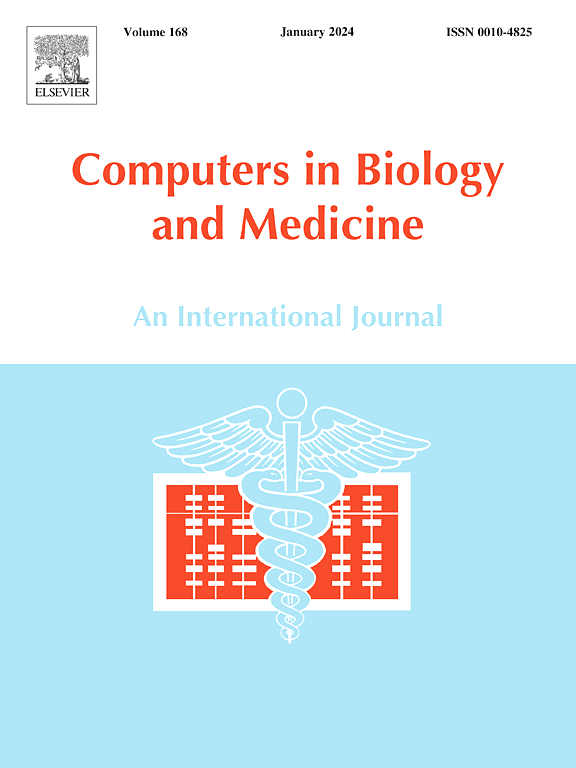MV-GNN:从三维+t 超声心动图生成二尖瓣运动的连续几何表征
IF 7
2区 医学
Q1 BIOLOGY
引用次数: 0
摘要
我们提出了一种几何深度学习方法,用于从三维经食道超声心动图序列中重建时间上连续的二尖瓣表面网格。我们的方法采用有监督的端到端深度学习架构,将基于卷积神经网络的体素编码器和解码器与基于图神经网络的多分辨率网格解码器结合在一起,所有这些都是在稀疏的地标注释上进行训练的。我们方法的关键要素包括一个带有标记顶点的管状原型网格、一个用于保留已知入口和出口的专门损失函数,以及一个用于解剖地标的刚性对齐系统。损耗函数中的一个自定义项可以防止瓣膜网格内的自交几何形状,促进点对应,并有利于随着时间的推移连续表示瓣膜解剖结构。一项消融研究评估了不同损失项配置对模型性能的影响,突出了每个损失项的有效性。我们的二尖瓣图神经网络(MV-GNN)在瓣环和瓣叶的大多数距离指标上都优于现有的深度学习方法。我们的方法(3D+t)生成的连续瓣膜运动表示的距离度量与我们的 3D 解决方案相当,这证明了它在分析二尖瓣动态以及增强血液动力学评估和治疗规划的个性化模拟方面的潜力。本文章由计算机程序翻译,如有差异,请以英文原文为准。
MV-GNN: Generation of continuous geometric representations of mitral valve motion from 3D+t echocardiography
We present a geometric deep-learning method for reconstructing a temporally continuous mitral valve surface mesh from 3D transesophageal echocardiography sequences. Our approach features a supervised end-to-end deep learning architecture that combines a convolutional neural network-based voxel encoder and decoder with a graph neural network-based multi-resolution mesh decoder, all trained on sparse landmark annotations. Key elements of our methodology include a tube-shaped prototype mesh with labeled vertices, a specialized loss function to preserve the known inlet and outlet, and a rigid alignment system for anatomical landmarks. A custom term in the loss function prevents self-intersecting geometries within the valve mesh, promoting point correspondence and facilitating a continuous representation of valve anatomy over time. An ablation study evaluates the impact of different loss term configurations on model performance, highlighting the effectiveness of each individual loss term. Our Mitral Valve Graph Neural Network (MV-GNN) outperforms existing deep-learning methods on most distance metrics for the annulus and leaflets. The continuous valve motion representations generated by our approach (3D+t) exhibit distance measures comparable to our 3D solution, demonstrating its potential for analyzing mitral valve dynamics and enhancing personalized simulations for hemodynamic assessment and therapy planning.
求助全文
通过发布文献求助,成功后即可免费获取论文全文。
去求助
来源期刊

Computers in biology and medicine
工程技术-工程:生物医学
CiteScore
11.70
自引率
10.40%
发文量
1086
审稿时长
74 days
期刊介绍:
Computers in Biology and Medicine is an international forum for sharing groundbreaking advancements in the use of computers in bioscience and medicine. This journal serves as a medium for communicating essential research, instruction, ideas, and information regarding the rapidly evolving field of computer applications in these domains. By encouraging the exchange of knowledge, we aim to facilitate progress and innovation in the utilization of computers in biology and medicine.
 求助内容:
求助内容: 应助结果提醒方式:
应助结果提醒方式:


